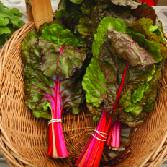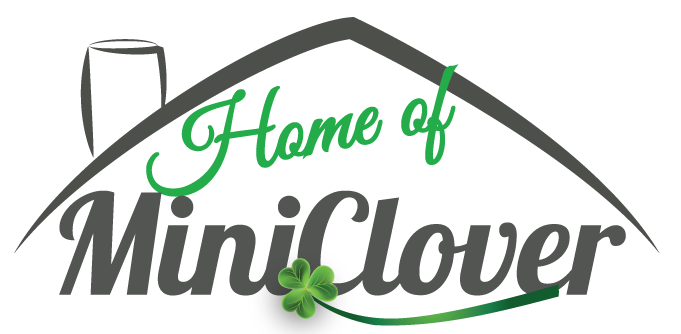-
CATEGORY ::
- All Seeds /
- All Clover Seeds







Red Clover Seed
LATIN NAME
Trifolium pratense
SEASON
Perennial (short lived)
USDA ZONES
3 - 9
ENVIRONMENT
Full sun
BLOOM COLOR
Red
SOWING TEMP
50F+
WHEN TO PLANT
Late winter to early spring
AVERAGE GERM
7 - 14 days
PLANTING DEPTH
1/8 - 1/4 inch
SOWING METHOD
Broadcast or drill
SEEDING RATE
8 - 16 lbs per acre
IDEAL FOR
Food plots, pollinators, cover crop
PLANT CHARACTERISTICS
Nitrogen fixator, adaptable
ESTABLISHMENT RATE
Moderate to fast
MOISTURE REQUIREMENTS
Moderate
ACIDIC SOIL TOLERANCE
Moderate
COLD TOLERANCE
Good
HEAT TOLERANCE
Good
SHADE TOLERANCE
Good
FERTILITY NEEDS
Low
MATURE HEIGHT
20 - 24 inches
LATIN NAME
Trifolium subterraneum
SEASON
Annual
USDA ZONES
3 - 10
ENVIRONMENT
Full sun to partial shade
BLOOM COLOR
White
SOWING TEMP
50F+
WHEN TO PLANT
Fall
AVERAGE GERM
7 - 14 days
PLANTING DEPTH
1/4 - 1/2 inch
SOWING METHOD
Broadcast or drill
SEEDING RATE
20 - 25 lbs per acre
IDEAL FOR
Full sun, partial shade, forage, adaptable, erosion control
PLANT CHARACTERISTICS
High protein
ESTABLISHMENT RATE
Moderate
MOISTURE REQUIREMENTS
Moderate
ACIDIC SOIL TOLERANCE
Good
COLD TOLERANCE
Good
HEAT TOLERANCE
Moderate
SHADE TOLERANCE
Good
FERTILITY NEEDS
Low
MATURE HEIGHT
6 - 15 inches
LATIN NAME
Trifolium repens
SEASON
Perennial
USDA ZONES
3 - 10
ENVIRONMENT
Full sun to partial shade
BLOOM COLOR
White (If not mowed)
SOWING TEMP
50F+
WHEN TO PLANT
Early spring to winter (southern states)
AVERAGE GERM
7 - 14 days
PLANTING DEPTH
1/8 inch
SOWING METHOD
Broadcast
SEEDING RATE
1 - 2 lbs per 1,000 square feet
IDEAL FOR
Lawns, erosion control, ground cover
PLANT CHARACTERISTICS
Nitrogen fixator
ESTABLISHMENT RATE
Fast
MOISTURE REQUIREMENTS
Low
ACIDIC SOIL TOLERANCE
Low
COLD TOLERANCE
Fair to good
HEAT TOLERANCE
Good
SHADE TOLERANCE
Poor
FERTILITY NEEDS
Low
MATURE HEIGHT
4 - 6 inches (with training)
SEASON
Annual
USDA ZONES
3 - 9
ENVIRONMENT
Full sun
BLOOM COLOR
White
SOWING TEMP
50F+
WHEN TO PLANT
6 - 8 weeks before first frost
AVERAGE GERM
7 - 14 days
PLANTING DEPTH
1/8 - 3/8 inch
SOWING METHOD
Broadcast or drill
SEEDING RATE
15 - 20 lbs per acre
IDEAL FOR
Wildlife plots, cover crop, mixtures, cattle forage, soil builder, erosion control
PLANT CHARACTERISTICS
Heat tolerant, nitrogen fixator
ESTABLISHMENT RATE
Fast
MOISTURE REQUIREMENTS
Moderate
ACIDIC SOIL TOLERANCE
Moderate
COLD TOLERANCE
Poor
HEAT TOLERANCE
Excellent
SHADE TOLERANCE
Good
FERTILITY NEEDS
Low
MATURE HEIGHT
18 - 48 inches
LATIN NAME
Trifolium michelianum savi
SEASON
Annual
USDA ZONES
3 - 9
ENVIRONMENT
Full sun
BLOOM COLOR
Pink
SOWING TEMP
50F+
WHEN TO PLANT
Fall (best) or early spring
AVERAGE GERM
7 - 14 days
PLANTING DEPTH
1/4 inch
SOWING METHOD
Broadcast or drill
SEEDING RATE
5 - 8 lbs per acre
IDEAL FOR
Cover crop, forage, pollinators, wildlife
PLANT CHARACTERISTICS
Drought tolerant, nitrogen fixator, biomass production
ESTABLISHMENT RATE
Fast
MOISTURE REQUIREMENTS
Low
ACIDIC SOIL TOLERANCE
High
COLD TOLERANCE
Good
FERTILITY NEEDS
Low
MATURE HEIGHT
48 - 72 inches
LATIN NAME
Trifolium vesiculosum
SEASON
Annual
USDA ZONES
3 - 10
ENVIRONMENT
Full sun
HEIGHT
36 - 48 inches
BLOOM COLOR
Pink
SOWING TEMP
40F+
WHEN TO PLANT
6 - 8 weeks before first frost
AVERAGE GERM
7 - 14 days
PLANTING DEPTH
1/8 - 1/4 inch
SOWING METHOD
Broadcast or drill
SEEDING RATE
10 - 15 lbs acre
IDEAL FOR
Hay, wildlife, orchards, row crops, mixed with grasses, pollinators, grazing, cover crop
PLANT CHARACTERISTICS
Drought tolerant, low maintenance
ESTABLISHMENT RATE
Fast
MOISTURE REQUIREMENTS
Low - moderate
ACIDIC SOIL TOLERANCE
Low
COLD TOLERANCE
Fair
HEAT TOLERANCE
Good
SHADE TOLERANCE
Poor
FERTILITY NEEDS
Low
MATURE HEIGHT
36 - 48 inches
About...
Red Clover (Trifolium Pratense) - Red clover is the most widely adapted of the true clovers. These short-lived perennial clover seeds are grown in Canada and most of the U.S. except the Great Plains states and the southwest. Mixes well with grass, used for hay, pasture, and soil improvement.
MORE CLOVER OPTIONS

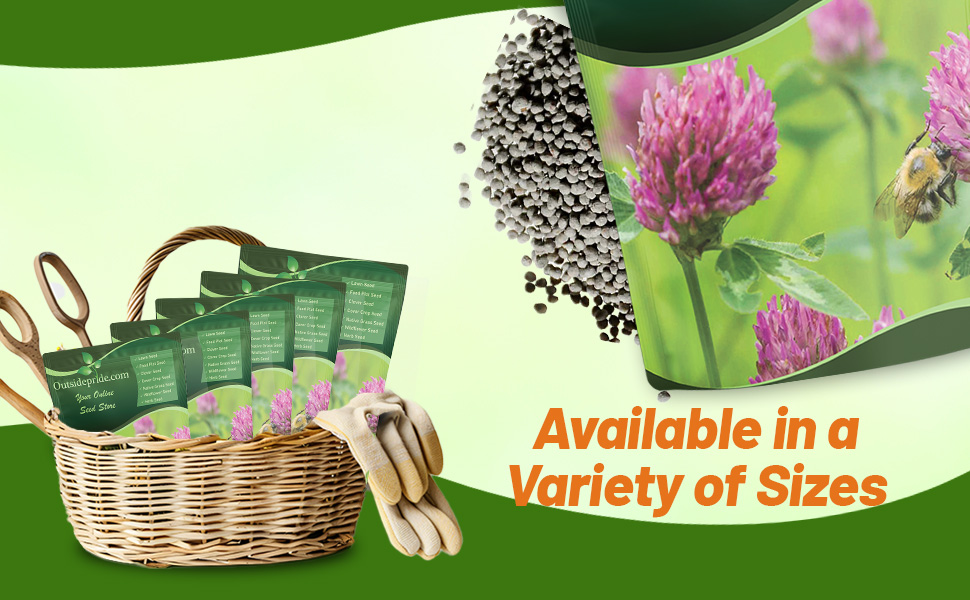
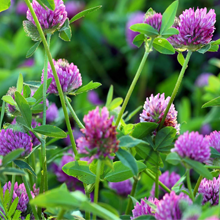
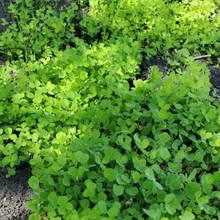
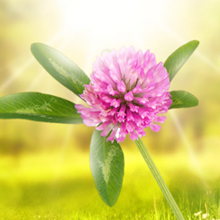
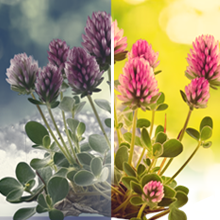
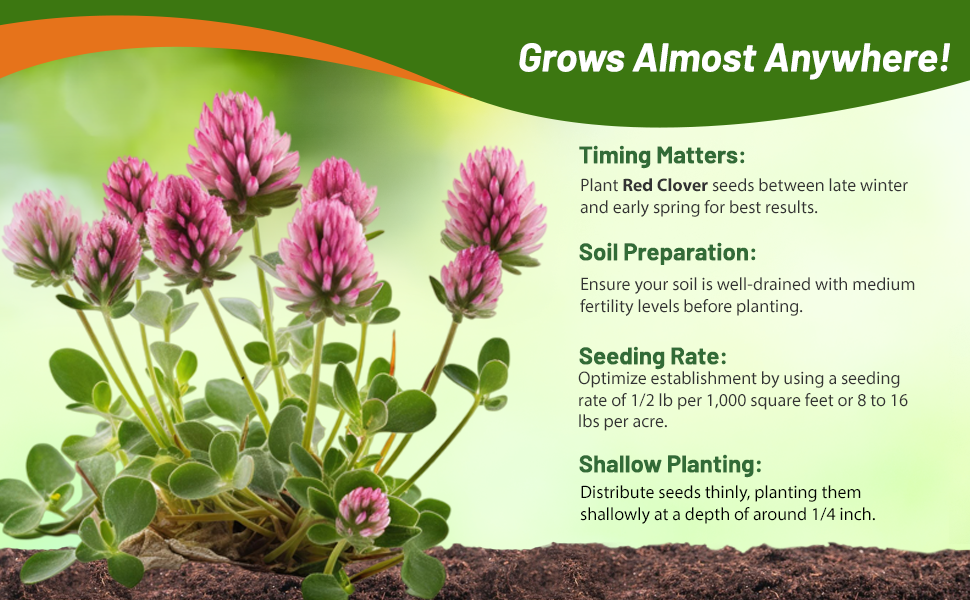
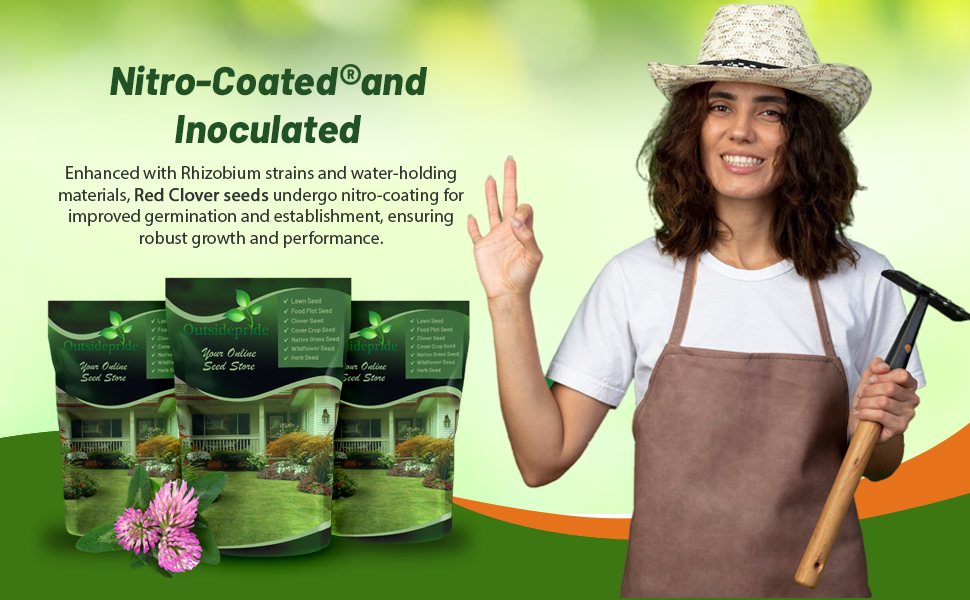
Red Clover (Trifolium Pratense) - Red clover seeds are an important forage legume grown widely in the temperate regions throughout the U.S. extending from the Northeast through the Midwest to eastern North and South Dakota, Nebraska, and Kansas and into the upper South. Red clover is becoming increasingly important in the Deep South where it is used as a winter annual. It is also grown in many areas from bulk clover seeds in the Pacific Northwest and other regions of the U.S.
Inoculated Seed - Our Red clover seed has been coated with an inoculant for better establishment. Nitrogen fixation is a one of the key values found in legumes and can only occur with the proper inoculation. Although many strains or Rhizobium may be present in the soil, all are not equally beneficial. With Nitro-Coat® each seed is inoculated with the correct Rhizobium strains and coated through a proven process that ensures a very high level of successful inoculation. A key to any successful establishment and early seed development is moisture. Nitro-Coat® is naturally water absorbent and helps attract soil moisture to the seed, getting your stand established quickly. This coating process which Outsidepride utilizes, assures that only the top-performing and crop-specific rhizobia will be applied to ensure your clovers reach maximum nodulation, stand establishment, and yield potential. With Nitro-Coat® each seed is inoculated with the correct Rhizobium strains and coated through a proven process that ensures a very high level of successful inoculation. The weight of the clover seeds will contain approximately 34% coating material that contains the inoculant and water holding material for better establishment and viability of the seed. There is no difference in the seeding rates between the coated and raw seed due to the increased germination and viability of the bulk clover seeds that are coated and inoculated. This coating material is not OMRI certified.
Red clover is adapted to a wide range of climatic conditions, soil types, fertility levels, use patterns and management. It is easy to establish, red clover seeds establish vigorously and is a very good clover to fixate nitrogen out of the atmosphere and in to the soil. Red clover is relatively easy to remain free of disease and pests. For this reason, red clover has many uses and is often used as part of a crop rotation program. Although red clover seed is tolerant of a wide range of soil and climatic conditions, it prefers rather mild conditions rather than hot climates and prefers locations where rainfall or irrigation are consistent throughout the year.
Red clover is most often grown in association with cool season grasses but can be grown alone or with certain warm season perennial grasses. It can be used for pasture, hay, or silage, and is an excellent soil improvement crop. When grown where it is well-adapted, the yield of red clover seed is usually higher than that of any other clover. In addition, it has a longer growing season than any other clover grown in the United States.
Red Clover - Soils & Fertility
Red clover seeds grow best on medium to well drained soils with adequate levels of fertility. To ensure your red clover seed gets off to a good start, it is worth the money to invest in a good soil test so you can find out the soil pH, phosphorus and potassium levels. Red clover seeds yields better and stands last longer when grown on soils with at least medium levels of phosphorus and potassium. A pH of 6.2-6.5 is usually recommended for excellent yields and stand persistence. In some states certain minor elements are recommended. You can contact your county extension agency to find out the best soil environment for your red clover seed. Nitrogen is not recommended when seeding red clover into grass. Nitrogen will stimulate the grass, thus providing more competition for the red clover seedlings during establishment.
Red Clover - Management
Adequate amounts of lime, nitrogen, phosphorus, potash and minor elements are needed to produce high yields of red clover and to maintain desirable stands. Nitrogen is supplied by nitrogen-fixing bacteria in nodules of properly inoculated red clover. Except for red clover seed production and in certain geographic locations, minor elements are usually supplied in adequate quantities by the soil. In general, lime, phosphorus, and potassium are the critical elements for red clover-grass production. Red clover seeds require a higher pH, as well as more phosphorus and potassium than most grasses. A soil test should be used as a guide in determining the amounts of fertilizer and lime needed as mentioned above.
Red Clover - Seed Planting
Plant red clover seeds at 1/2 lb per 1,000 square feet or 8 to 16 lbs per acre. Ideal seeding depth is approximately 1/4 inch, but error on the side of being shallow rather than too deep. Good seed-soil contact helps ensure establishment. Most red clover is seeded in late winter to early spring in the northern and central parts of the red clover belt. Autumn plantings are preferred in the Lower South.
















